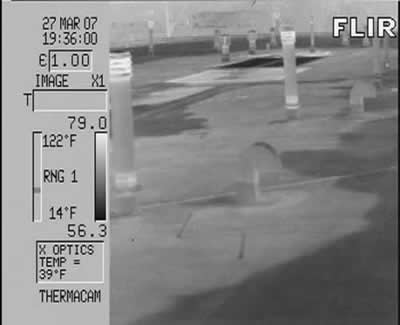Infrared Inspections of Roofs Containing Foam Insulation
Sponsored by:

Infrared Inspections of Roofs Containing Foam Insulation
Tip written by: Infraspection Institute
You can’t believe everything you hear. This can be especially true when it comes to performing infrared inspections on flat roofs that contain closed cell foam insulation.
Closed cell foam generically describes several insulation materials commonly found in low slope or flat roofs. Typical materials include urethane foam, isocyanurate foam and, in some cases, cellular glass. Closed cell foam insulations typically offer good R value, are dimensionally stable, and can be used with a wide variety of roofing materials.
Another characteristic of closed cell foam insulations is that they are water resistant. This characteristic, however, only applies to short term exposure to water. When installed in a roofing system and exposed to water for extended periods of time, the cells tend to break down permitting the insulation to become quite absorbent. When this occurs, foam insulation can absorb large quantities of moisture and will exhibit the type of thermal patterns typically associated with absorbent insulations.
Over the years, many have claimed that infrared inspections of closed cell foam roofs are ineffective due to foam’s low absorbency. The thermal image below clearly shows the extent of water damage in a roof constructed with foam insulation.

Note the solid thermal pattern typical of absorbent insulation.
Thermogram provided by Jersey Infrared Consultants
Initially, thermal patterns associated with latent moisture in roofs containing foam insulation will exhibit ‘picture frame’ signatures. These thermal patterns are due to water collecting at the perimeter of individual boards. As time progresses and the foam loses its water resistance, insulation boards will begin to exhibit the same type of thermal signatures exhibited by wet, absorbent insulations such as wood or glass fiber.
Infrared inspections of flat roofs is one of the many applications covered in the Infraspection Institute Level I Certified Infrared Thermographer® training course. For course schedules or to obtain a copy of the Standard for Infrared Inspection of Insulated Roofs, visit Infraspection Institute online or call us at 609-239-4788.
Advertisement

